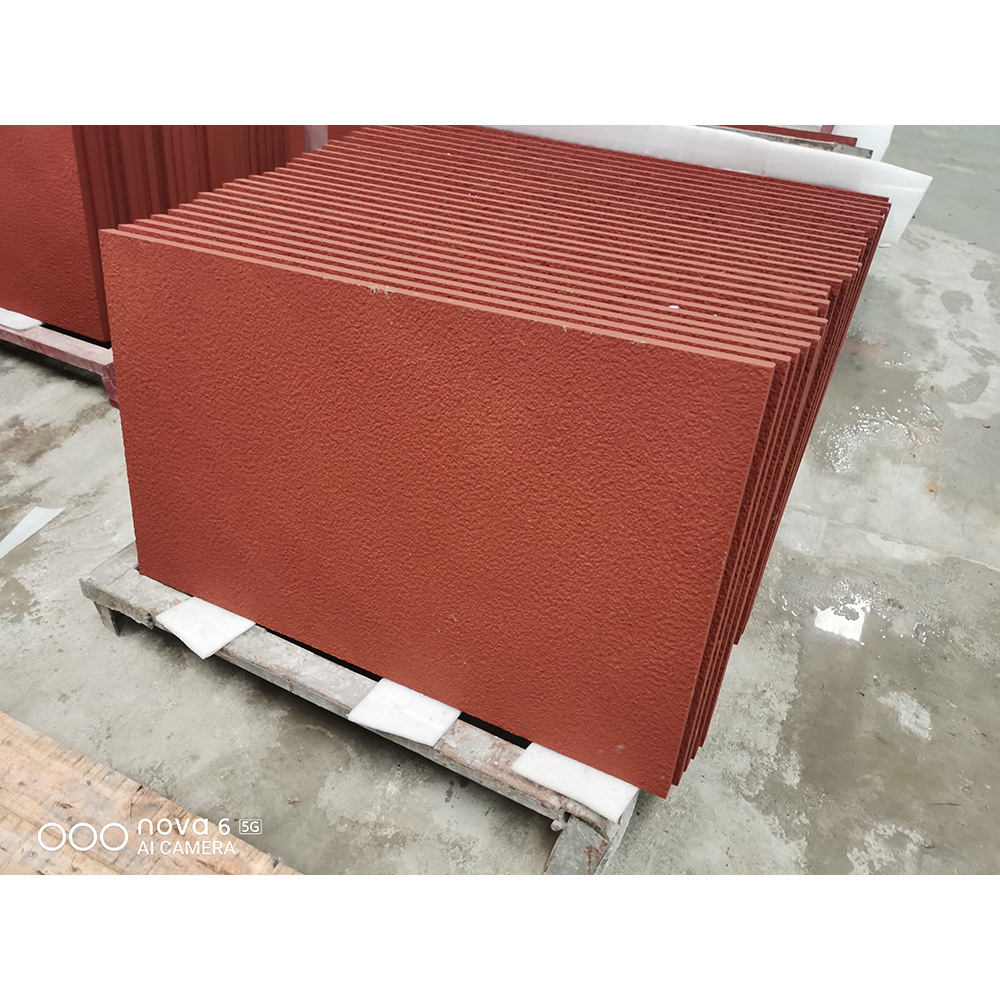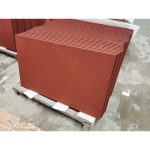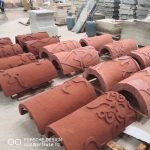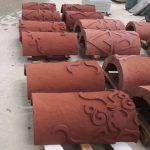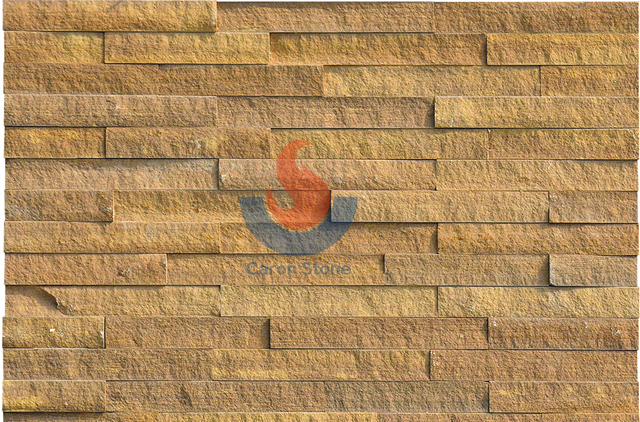» China Sichuan Dark Red Sandstone
Sichuan Dark Red Sandstone is a versatile and beautiful natural stone that adds a touch of elegance and sophistication to any space. With its rich, deep red color and natural texture, our Sichuan Dark Red Sandstone products are the perfect choice for modern and traditional designs alike.
In addition to size customization, our sandstone can be finished in a variety of ways to match your design preferences. From polished and honed surfaces to brushed and tumbled textures, we offer a range of finishes to enhance the natural beauty of the stone. For more intricate designs, our waterjet patterns and mosaics provide endless possibilities for creating unique and personalized installations. Our products can also be printed with custom designs, allowing you to add a personal touch to your space.
1. Durability and Weather Resistance
-
Red Sandstone: Known for its durability and resistance to weathering, Red Sandstone can withstand various weather conditions, including rain, wind, and temperature fluctuations. Its natural strength makes it suitable for heavy-duty applications such as building facades and exterior cladding. However, its porosity can lead to water absorption, which may cause staining if not properly sealed.
-
Marble: While marble is durable, it is generally softer and more porous than red sandstone. It is susceptible to staining from acidic substances and requires regular sealing to maintain its appearance. Marble is less suitable for exterior applications due to its vulnerability to weathering.
-
Granite: Granite is highly durable and resistant to weathering, making it an excellent choice for exterior applications. It is less porous than red sandstone and marble, reducing the risk of staining and weather damage.
2. Aesthetic Appeal
-
Red Sandstone: The warm, rich red color of red sandstone adds a unique aesthetic value to architectural projects. Its natural texture and color variations ensure that each application is unique, making it ideal for creating visual contrast and adding character to exterior designs.
-
Marble: Marble is known for its luxurious, polished appearance and distinctive veining. While it adds a sense of elegance and sophistication, its lighter colors may not be as striking in exterior applications as red sandstone.
-
Granite: Granite offers a wide range of colors and patterns, making it versatile for various design styles. Its dense, speckled appearance provides a modern and durable look for exterior applications.
3. Maintenance and Longevity
-
Red Sandstone: Red sandstone requires minimal maintenance. Regular cleaning and occasional sealing can help maintain its appearance over time. Proper sealing can also enhance its resistance to staining and weathering.
-
Marble: Marble requires careful maintenance due to its porous nature. Regular sealing is necessary to prevent staining and etching from acidic substances. It is also more prone to scratches and chips in high-traffic areas.
-
Granite: Granite is low-maintenance and highly durable. It requires minimal care and can withstand daily wear and tear with ease.
4. Environmental Impact
-
Red Sandstone: As a natural stone, red sandstone is an environmentally friendly building material. It can be recycled and repurposed, reducing waste and environmental impact. Its durability means that structures built from it can last for centuries, further reducing the need for frequent replacements.
-
Marble: Marble is also a natural stone with a relatively low environmental impact. However, its porous nature may require more frequent maintenance and sealing, which can increase its overall environmental footprint.
-
Granite: Granite is considered one of the most sustainable natural stones. Its durability and longevity mean that it requires minimal maintenance and lasts for a very long time, reducing waste and environmental impact.
5. Applications
-
Red Sandstone: Common applications include building facades, exterior cladding, paving, garden features, and monuments. Its natural beauty and versatility make it suitable for both rustic and contemporary designs.
-
Marble: Marble is often used for interior applications such as flooring, wall cladding, and decorative elements. While it can be used in exterior applications, its vulnerability to weathering and staining limits its use in high-traffic outdoor areas.
-
Granite: Granite is widely used for exterior applications such as countertops, flooring, and building facades. Its durability and resistance to weathering make it an ideal choice for high-traffic areas.





